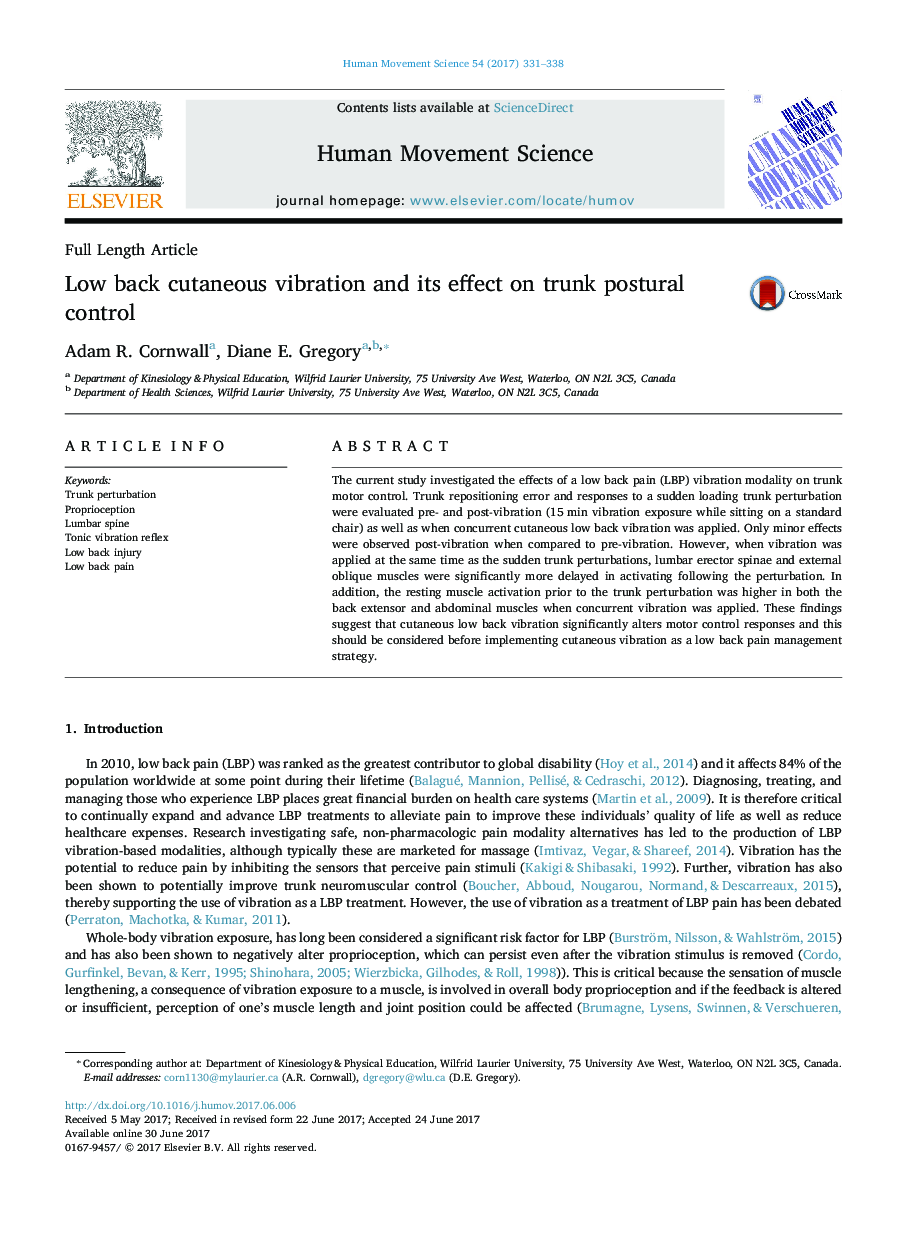| Article ID | Journal | Published Year | Pages | File Type |
|---|---|---|---|---|
| 5041992 | Human Movement Science | 2017 | 8 Pages |
The current study investigated the effects of a low back pain (LBP) vibration modality on trunk motor control. Trunk repositioning error and responses to a sudden loading trunk perturbation were evaluated pre- and post-vibration (15Â min vibration exposure while sitting on a standard chair) as well as when concurrent cutaneous low back vibration was applied. Only minor effects were observed post-vibration when compared to pre-vibration. However, when vibration was applied at the same time as the sudden trunk perturbations, lumbar erector spinae and external oblique muscles were significantly more delayed in activating following the perturbation. In addition, the resting muscle activation prior to the trunk perturbation was higher in both the back extensor and abdominal muscles when concurrent vibration was applied. These findings suggest that cutaneous low back vibration significantly alters motor control responses and this should be considered before implementing cutaneous vibration as a low back pain management strategy.
